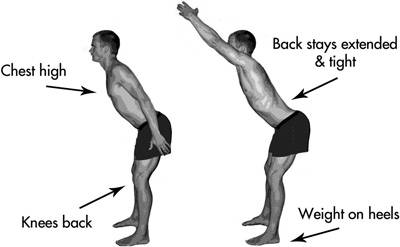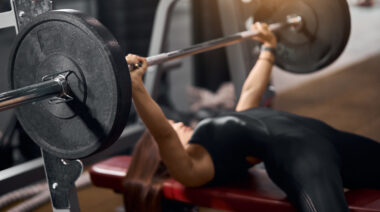It’s the unfortunate state of our sport. Ask any physical therapist, chiropractor, or acupuncturist what they think of CrossFit and the reply is usually, “I love CrossFit, they keep me in business.” Ouch.
I don’t believe CrossFit is inherently dangerous, especially if taught by intelligent, experienced coaches. However, CrossFit is brilliant at pointing out people’s natural, athletic, structural, and muscular deficiencies. As coach Eric Malzone says, “CrossFit is going to let you know all of the ways that your regular life has screwed you up physically.” Unfortunately, it often does this through an injury.
Malzone and I actually own a CrossFit gym together, and we’ve had our fair share of “gurus” walk in and present their new-fangled gadgets and modalities. Oh wow, you’ve combined muay Thai, Zumba, yoga, and hypnosis into an eight-minute workout my clients will love? Fantastic, leave your flier on the counter and try not to disturb anyone who’s actually training on your way out. Thus, when Dr. Eric Goodman came in and asked us if we’d heard about his Foundation Training, I smiled a lot, batted my eyelashes a few times – since, well, he is kind of dreamy – and listened to what the man had to say. With a heavy dose of skepticism we let him run a few of us through an abbreviated version of his usual hour class.
I believe Malzone and I were both sold on what Dr. Goodman had to offer about thirty seconds into that first Foundation session when we couldn’t get our legs to stop shaking nor our sweat glands to close. To this day it infuriates me that with my current physical skill set I can’t hold the proper Founder position for more than about fifteen seconds without wanting to cry just a little bit.
So what the heck is Foundation Training and why should it be making its way into the lives of CrossFitters? Per Dr. Goodman:
Foundations Training is a set of movements and positions designed specifically to teach our individual muscles to act within strong, flexible chains of muscles. This allows us to disperse weight more evenly and keep our postural alignment, even under load.
Dr. Goodman spends his day teaching people how to change the movement patterns that are breaking them down – the patterns setting them up for injury in CrossFit.
As a coach, I have found the positions and movements of Foundation to be invaluable training tools. Telling an athlete to engage their lumbar is one thing. Putting them into a physical position where they are forced to engage their lumbar and therefore have the tangible experience of it being engaged is exponentially more powerful. Repeatedly putting people into that position until they are not only engaging their lumbar consistently, but additionally building the necessarily strength in the corresponding muscles is the best way to keep them out of the chiropractor’s office.
The Founder Position is the core of the training:
To enter into a proper Founder:
- Stand with your feet facing straight forward, legs about 3 feet apart. Stand tall with your chest held high and chin pulling back towards your neck.
- Press your body weight into the heels and pull your hips back behind you with knees ever so slightly bent. Be sure to continue your chest lifting and chin pulling towards the neck throughout the whole movement sequence.
- As the hips pull back bring the arms, with palms up, straight ahead of you. Lift your arms as high as you can and keep your eyes on the horizon. Your lower back should be on fire within 20 seconds if in the right position.
- After 20-40 seconds of the founder position you are going to stretch to the ground or to a chair height object I’m front of you. As you stretch, be sure to keep your weight behind your heels, knees slightly bent and hips as far back as possible.
- If you feel the stretch in your hamstrings, calves, glutes, and low back you are nailing the exercise. Hold it for 20-40 seconds.
- SLOWLY begin to return to the founder position by pressing your hands to the shins and lift your chest up with a tight, braced lower spine. WATCH THE VIDEO AT LEAST ONCE THROUGH BEFORE ATTEMPTING THE FULL EXERCISE.
- As soon as your chest is high enough to look forward and your weight is pressed firmly into the heels you can bring the arms behind you, making your chest as wide as possible. Your goal is to recreate the dense muscle tension at the low back muscles while stretching the hamstrings. That will make a lot more sense after practicing a bit.
- The finishing move is bring the arms forward and up as high as possible while keeping the hips hinged, the weight on the heels and the chest as high as possible.
- Do this a lot.
As an active athlete in CrossFit competitions, Malzone had this to say, after trying the protocol for a while:
It’s easy when I do Foundation consistently – my back doesn’t hurt at all and I can throw around a lot of weight in workouts. When I don’t do it consistently, my back starts to hurt and I have to spend my training time icing down. For me, that’s not really a choice.
At our gym, Malzone and I include Foundation Training as part of our regular class rotation not just because it is hard (hard does not mean effective – golf is hard), but we both endorse it because, very much like CrossFit, we walked away from it that first time thinking, “Well…I’m not all that sure what the hell just happened, but 1) it was awful and 2) I feel amazing and want to do it again.”
Malzone has a herniated disc at L4/L5 from a lifetime of water polo meeting a #400 deadlift. I’ve got a royally screwed up neck after from a few years of MMA. After a few weeks of Dr. Goodman’s hippie movement voodoo, we’re both training harder than ever – pain and injury free. As are our clients.
For more information feel free to check out foundationtraining.com.







